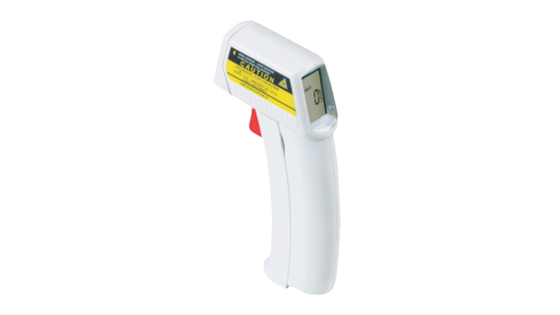Social distancing driving demand
Social distancing guidelines issued by federal, provincial and local health authorities require businesses to provide detailed plans on how social distancing will be achieved as they begin to reopen.
For many, these new social distancing guidelines place restrictions on occupancy, the distance between people, and require personal protective equipment where people are less than two meters apart. Businesses are also expected to follow the guidance of health authorities if the people they are responsible for start to show symptoms of COVID-19.
Thermal cameras can identify elevated temperatures which may help to screen people who could be symptomatic with COVID-19. Being able to identify elevated temperatures using thermal cameras can mitigate the risk of an outbreak within a workplace and help a commercial business move forward.
So, what are thermal cameras?
Thermal cameras detect temperature by recognizing and capturing different levels of infrared light. And the technology has been around for a long time!
From dairy farms to recycling facilities and industrial sites, thermal cameras have traditionally been used to help detect fires and secure facilities. For example, thermal cameras can detect elevated temperatures in a transformer, which means it can alert you to when it’s overheating so that it doesn’t combust. A thermal camera can do this because it can “see” in a way that visible light cameras cannot, such as in the dark, making it a popular choice for security.
Thermal cameras “see” heat.
A thermal camera works better than a light camera because it can “see” heat rather than light. It can, therefore:
- See in complete darkness.
- See through obscurants (such as smoke, dust, haze),
- See through particulates (such as fog, rain or snow),
- See beyond the glare of a bright light,
- Be effective at all hours, in all-weather types.
In these traditional scenarios, accuracy has not been required, however, when it comes to detecting human body temperature, a more accurate temperature read is needed.
Can thermal cameras detect a virus?
No. Thermal cameras are not a medical solution. They can't identify a virus and they are not able to protect people from catching the virus. Thermal cameras can, however, detect elevated skin temperature.
According to Gowlings, some workplaces have started to use this technology to screen their employees as it's "non-invasive, produces objective and instant results and tests for one of the primary symptoms of COVID-19."
Gowlings continues by saying that "an employer's decision to implement temperature screening may be a reasonable method for mitigating the risk of an outbreak within a workplace."
In practice, thermal cameras can be used to monitor and measure temperatures of the skin in real-time, and indicate if the temperature is above average. If the temperature is above average, then the individual can be selected for additional screening.
The accuracy of thermal cameras varies depending on which solution you choose. More advanced technologies, like Dahua's thermal monitoring solution, is accurate up to 0.3-degree celsius and is currently being used in the Calgary Airport.
What are my options?
According to Informatech’s (2020) white paper on “How Thermal Cameras can help prevent the spread of COVID-19: Thermal body temperature applications,” and written in partnership with Dahua Technologies, there are three (3) main types of thermal monitoring solutions. Each solution is used in different scenarios, depending on the requirements of the workplace. Each has different capabilities, benefits and detractors.
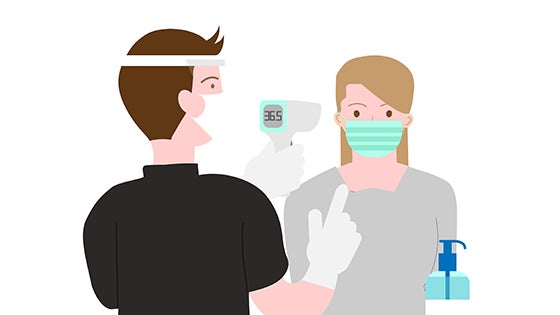
1. Hand-held temperature scanners
A hand-held device is used to take a person’s temperature. These solutions can be medically certified, and are less expensive. They are considered to have increased operator risk, are more invasive, and can only scan one person at a time.
2. Basic thermal body temperature solutions
A thermal camera which is typically hand-held and administered manually. However, we are now seeing kiosk versions of these types of devices which do not require a person to administer them. These solutions are not medically certified, but are considered non-invasive. They are less accurate than scanners, but are able to scan a person more quickly, and are less expensive.
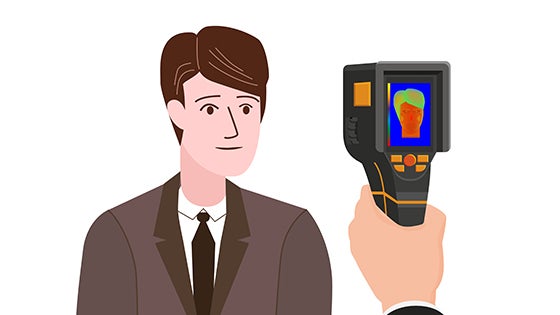
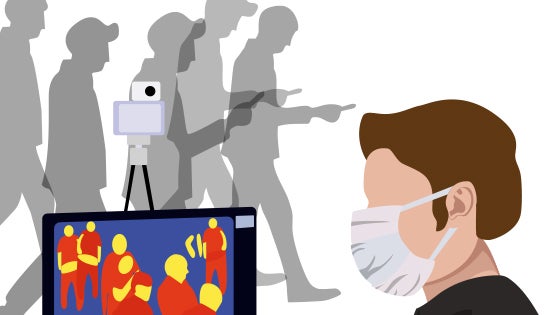
3. Advanced thermal body temperature solution (automated)
These solutions are also non-invasive, and have improved accuracy. They are more accurate because they use a thermal camera, a reference module and an A.I. algorithm. They can also be used to scan each person more quickly. They are not medically certified and are more expensive. They can be set-up as a permanent or non-permanent solution (through tripods).
So how does it work?
According to Informatech’s (2020) whitepaper, “thermal body temperature solutions require at a minimum a radiometric thermal camera to measure temperature differences in people entering the field of view”(3). The paper continues by saying “more advanced solutions will use black body devices to help calibrate the temperature measurements, especially in less controlled envrionments where the elements can influence the reading” (3). These systems also have A.I. (Artificial Intelligence) algorithms can which targets the temperature reading to the forehead or near the eyes. A.I. prevents these cameras from alarming on other types of stimuli – such as a hot coffee or tea (Informatech, 2020). Many of these devices can also be repurposed for security purposes.
Which solution is right for you?
Each business will have its own set of requirements as they begin to reopen.
If you’re operating a business with a high likelihood for people to cluster than thermal cameras may be of interest to you.
Thermal cameras can encourage positive behaviors towards social distancing. Taking a manual temperature read can take time which can cause line-ups to occur. Being able to scan a person’s temperature quickly can minimize the risk of people clustering and not adhering to physical distancing guidelines as they wait to enter a building.
In this case, a faster thermal body monitoring solution may be better suited to your needs as hand-held devices time to administer.
Being able to detect elevated skin temperature can be a useful way to help you reopen and make your customers (and employees) feel more comfortable visiting your venue.
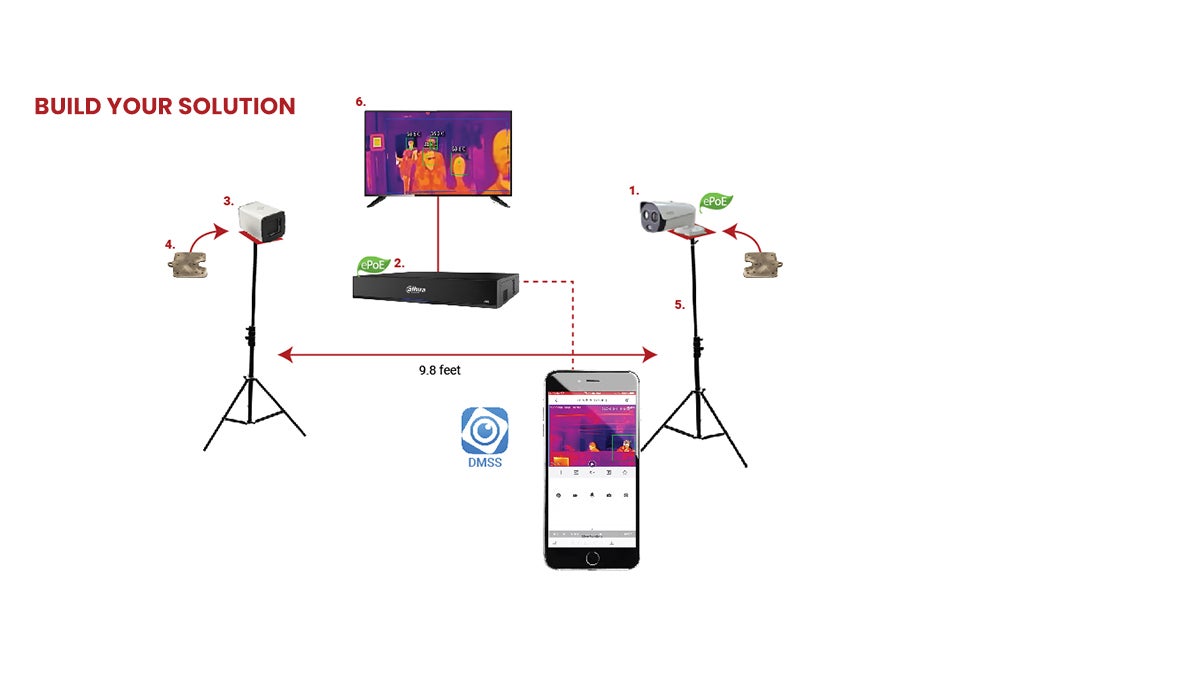
This new thermal camera system is capable of highly accurate body temperature measurement + 3⁰ C (using black-body, a calibration device for accurate temperature readings). With a built-in AI algorithm, it can measure multiple people from 9.8 ft away and 4.3 ft wide, enabling fast temperature assessment without personal contact.
Who’s buying?
Our customers that serve casinos, food processing plants and airport authorities are being asked about thermal monitoring solutions.
Places that have a higher likelihood for people to cluster (such as airports or transit) or places with vulnerable people such as care homes or hospitals are using, or considering using, these types of solutions.
Even before COVID-19, our industrial customers were purchasing thermal cameras to help detect fires, and they have been used by many other customers for their security capabilities.
While in the past thermal cameras have been used for security or fire detection, their accuracy capabilities are increasing. Many thermal cameras also include counting features which helps grocery stores count the number of people entering or exiting a building.
Questions you may consider asking your customers if they’re wanting to buy a thermal monitoring solution are:
- Do you have staff available to manually check human body temperature?
- Does your business have adequate PPE available for the employees completing manual temperature checks?
- How busy is the monitored entrance?
- Is speed of the reading important? For example, do you expect lines to form?
- How many people are entering and exiting your business per hour. Are you required to count the number of people on premise?
If you have questions about which device makes the most sense for your client’s business, talk to one of our experts. We’re happy to help you.




